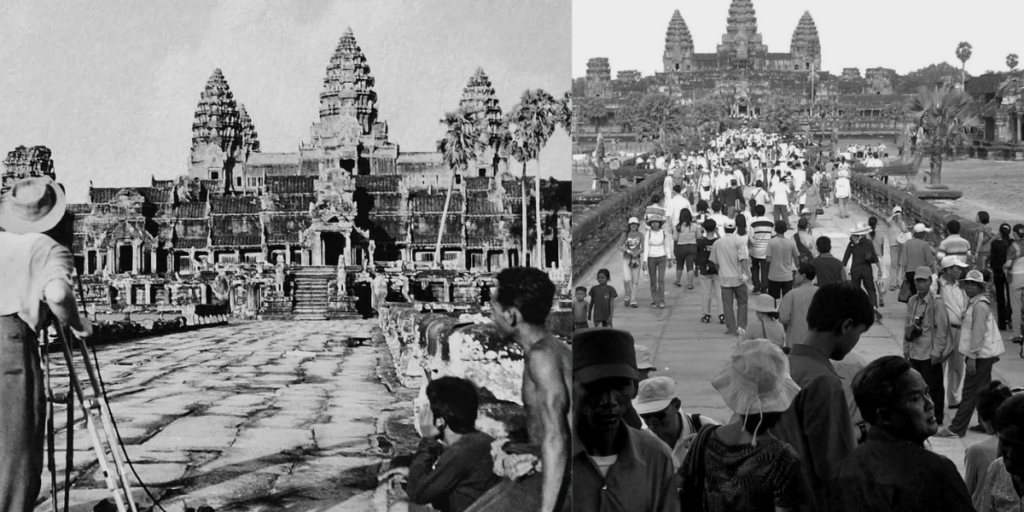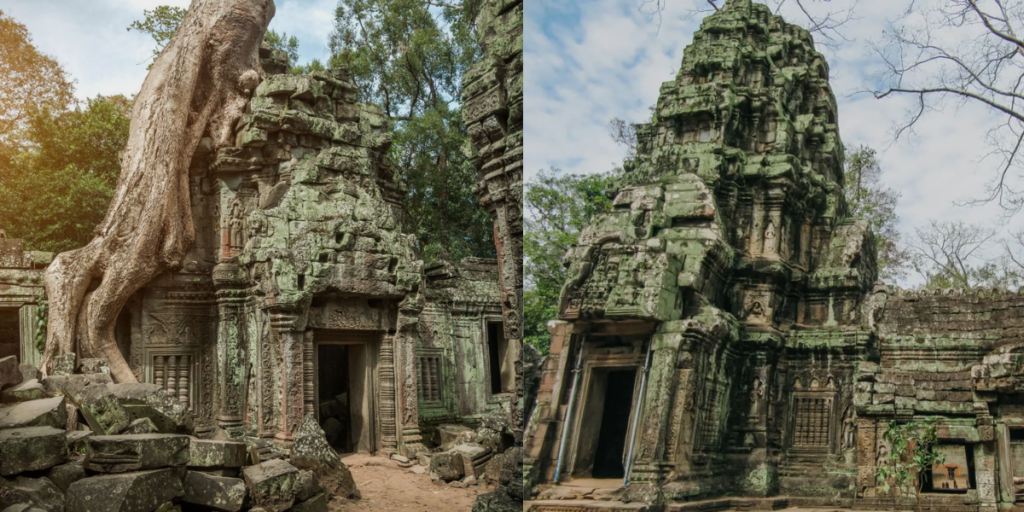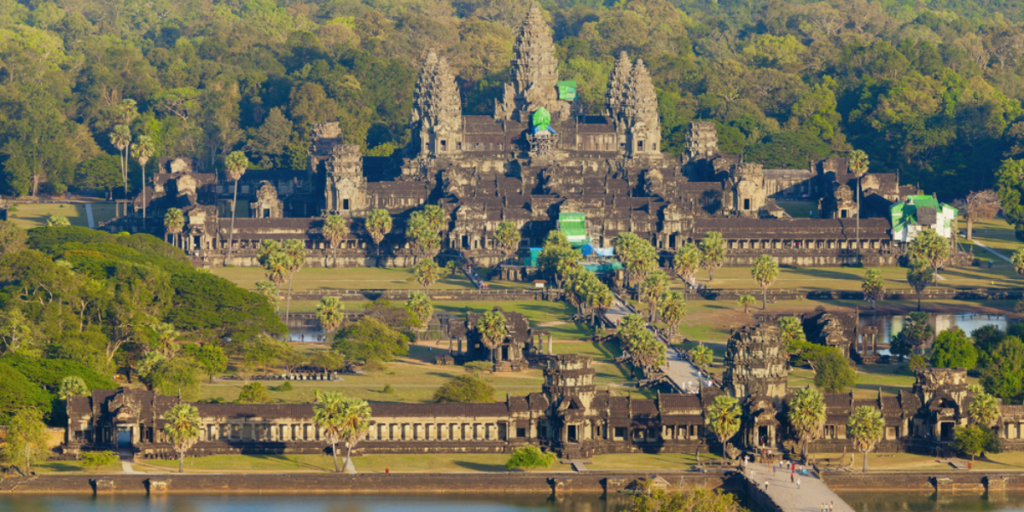Angkor Wat, located in Siem Reap, Cambodia, is one of the most magnificent and largest religious monuments in the world. This architectural masterpiece, originally constructed in the early 12th century by the Khmer King Suryavarman II, stands as a testament to the ingenuity, devotion, and artistry of the Khmer Empire. Angkor Wat not only serves as a symbol of Cambodia but also as a source of national pride and a significant attraction for tourists worldwide.
Historical Background
The name “Angkor Wat” translates to “City of Temples” in Khmer. Initially built as a Hindu temple dedicated to the god Vishnu, it was later transformed into a Buddhist temple towards the end of the 12th century. The transition from Hinduism to Buddhism reflects the evolving religious landscape of the region during that era.
Angkor Wat was designed to represent Mount Meru, the sacred mountain in Hindu and Buddhist cosmology. The temple complex is a miniature replica of the universe in stone, symbolizing an earthly model of the cosmic world. The central tower, standing 65 meters high, represents the mythical mountain’s peak, surrounded by four smaller towers.
Architectural Marvel
The grandeur of Angkor Wat lies in its colossal scale, intricate carvings, and sophisticated design. The temple complex covers an area of approximately 162.6 hectares (402 acres), encircled by a vast moat and an outer wall measuring 3.6 kilometers in length.
One of the most remarkable features of Angkor Wat is its extensive bas-reliefs, which cover the walls of the temple. These carvings depict scenes from Hindu mythology, including the famous “Churning of the Ocean of Milk. A mythological story about the creation of the world and the search for the elixir of immortality. The level of detail and artistry in these carvings is unparalleled, showcasing the exceptional craftsmanship of the Khmer artisans.
The layout of Angkor Wat is based on a rectangular grid, reflecting a highly sophisticated understanding of architectural planning and symmetry. The central sanctuary is accessed through a series of galleries and courtyards, each representing different stages of spiritual ascension. The main entrance is through the western gate, an unusual orientation as most Khmer temples face east. This westward orientation is believed to be associated with Vishnu, who is often linked with the West.
Spiritual Significance
Angkor Wat is more than just an architectural wonder; it is the spiritual and cultural heart of Cambodia. For centuries, it has been a place of worship and pilgrimage. The temple’s design, with its harmonious proportions and spiritual symbolism, evokes a sense of transcendence and divine presence.
The temple complex was not just a place of worship but also a hub of the Khmer Empire’s political and economic power. It played a central role in the empire’s administration and served as a symbol of the king’s divine authority. The grandeur of Angkor Wat reflected the glory and prosperity of the Khmer Empire at its zenith.
Rediscovery and Restoration
Angkor Wat was largely abandoned after the fall of the Khmer Empire in the 15th century and fell into a state of disrepair. Overgrown by the jungle, it remained hidden from the Western world until the late 19th century when French explorer Henri Mouhot “rediscovered” it in 1860. Mouhot’s accounts and sketches of the temple complex captivated the imagination of the world, bringing Angkor Wat to international attention.
In the 20th century, extensive restoration efforts were undertaken to preserve this architectural gem. The restoration work, spearheaded by international teams, involved clearing the jungle overgrowth, stabilizing the structures, and restoring the intricate carvings. Despite the challenges, including periods of political instability and war. These efforts have ensured that Angkor Wat remains a well-preserved monument of historical and cultural significance.
Angkor Wat Today
Today, Angkor Wat stands as a UNESCO World Heritage Site, drawing millions of visitors each year. It is a symbol of Cambodia’s rich cultural heritage and a source of national pride. The temple complex has become an iconic representation of Cambodia, appearing on the national flag and currency.
Tourism plays a vital role in the local economy, with Angkor Wat being the centerpiece of Cambodia’s tourism industry. The influx of visitors has spurred economic growth in the Siem Reap region, leading to the development of hotels, restaurants, and other amenities catering to tourists. However, the surge in tourism also poses challenges in terms of conservation and sustainability. Efforts are ongoing to balance the preservation of this ancient monument with the demands of modern tourism.
Conclusion:
Angkor Wat is a timeless masterpiece that transcends its historical and cultural origins. It stands as a testament to the extraordinary achievements of the Khmer Empire and the enduring spiritual and artistic legacy of Cambodia. As one of the most important archaeological sites in Southeast Asia. Angkor Wat continues to inspire awe and reverence in all who visit it, offering a glimpse into a bygone era of grandeur and devotion. Whether viewed through the lens of history, architecture, or spirituality. Angkor Wat remains an unparalleled marvel of human creativity and faith.






